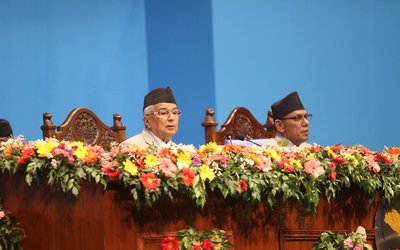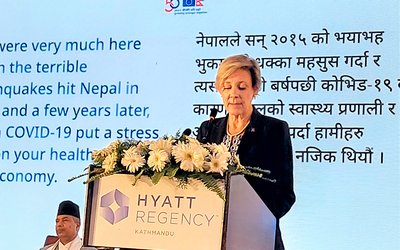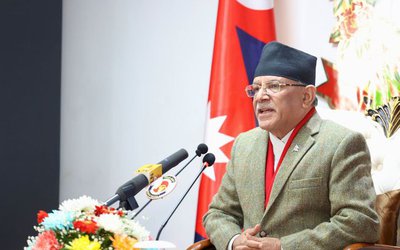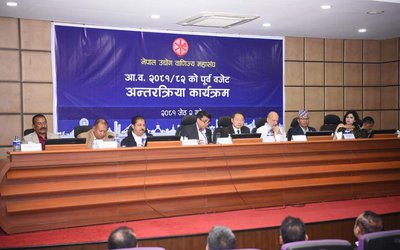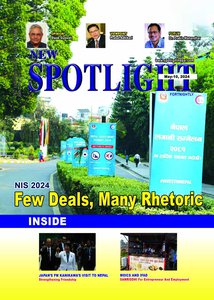October 2019, the Government has made public the Environment Protection Rules (EPR) 2020 on 15 June 2020. The EPA 2019 and EPR 2020 have repealed EPA 1996 and EPR 1997. In order to encourage the drafters and decision-makers to make the new EPA and EPR more practical, development and user-friendly and contribute to making development environmentally sound and sustainable, over three decades of experiences were shared through three articles https://www.spotlightnepal.com/2019/05/21/environment-protection-bill-2019-heavy-punishment-non-compliance/; https://www.spotlightnepal.com/2019/12/05/environm ent-protection-act-2019-complexity-study-approval-process/; and https://www.spotlightnepal.com/2020/01/27/draft-environment-protection-rule-2019-proven-and-practical-tool/).
Efforts were made to provide practical inputs in January 2020 article on draft EPR. In spite of several inputs from the non-governmental sector, the June 2020 EPR neglects, in some cases, the fundamentals and principles of environmental assessment [Initial Environmental Examination (IEE), and Environmental Impact Assessment (EIA)] process, procedures and practices.
This piece highlights a few operational issues and will hopefully 'close my inputs' in EPR 2020. The brief environmental study (BES) report is an addition in the EPR 2020. As per EPA 2019, the proposal includes a plan, project, or program; and Strategic Environmental Analysis (SEAn) is proposed to carry out for policy or program or project. As mentioned above, a program or project may require BES, IEE, EIA, or SEAn. In general understanding, BES, IEE or EIA are carried out for projects, and Strategic Environmental Assessment (SEA) is for policy, plan, or program. This sufficiently confuses the global and regional practices in carrying out project-level or higher-level of assessments. It is, therefore, natural to consider 'redundant' and 'departure from practices'.
The required time for approval of the Scoping document, Terms of Reference (ToR) and environmental study reports may require 'determined' effort of the concerned officials engaged in processing for approval and decision-makers. The number of days the government will take for approval will be counted only after submission of all required documents, including 'revised' reports. Once all quality documents are received, the Government will need 35 days to approve of an EIA report. If all processes are complete, a decision can be made within a few days. Efficiency will be 'known' only after full implementation of the EPR 2020 and 'positive outlook' in the decision-making process for all types of projects and of all proponents.
In the case of the public hearing, the Rules (#6.3) obliges the proponent to organize public hearing in more than one place taking into consideration the geographical area to be covered by the project. In order to make it 'development-friendly', it is encouraged to clearly mention the 'number of the public hearing required' while approving the ToR as it is time-consuming and in some cases costly. It is equally important to consider the nature and location of the project.
Reviewing the Schedules, Schedules 1, 2 and 3 provide a list of proposals that require BES, IEE and EIA studies respectively and the proponent will proceed for preparing BES, IEE or EIA reports. The 1997 EPR included 'sensitive area and investment criteria' for proposals that were not covered in Schedules. As per EPR 2020, any category of proposals not included in these three Schedules will neither be implemented nor any level of environmental assessments required. Alternatively, all new proposals not included in these Schedules will be environment-friendly. This 'far-sightedness' or 'gross negligence' will, at least, promote socio-economic development 'at the cost of the environment'.
Each Schedule considers pre-construction, construction and operational stages of a project. Some proposals may be directly implemented and may not require these stages. For example, plantation of single species in a block, or clear felling in more than 30 ha of land will not require the construction stage as in infrastructure projects.
The Schedules follow 'instructive' mode and do not provide space for 'not to include irrelevant' information. For example, a proposal will be introduced under Introduction and Information about Proposal in a Scoping Document. In the late 1990s, there were cases of instruction to re-submit an EIA report as per environmental laws if the report followed National EIA Guidelines (1993) and re-submit the EIA report as per guideline if it followed environmental laws. This is an 'intention' issue.
Stakeholders are given the opportunity to comment and provide inputs on environmental assessment reports. In general, the draft report is made public but the format of the public notice clearly indicates to collect stakeholder's suggestions 'while preparing the report'. It indicates that stakeholders or 'to be affected' community(ies) may or may not be informed about the impacts of the proposal with corresponding measures. As also flagged previously, the IEE report format is inappropriate to all sectors. The alternative analysis undermines the '3W' (with & without, and within) approach. The EIA report format undermines the national and transboundary nature of impacts and instructs to write impact-based measures in two chapters. Clarity is required in environmental monitoring and auditing as well. Unnecessary details further confuse and delay decision-making.
The Ministry of Forests and Environment or the 'prescribed agency' is responsible for environmental auditing. However, the ToR for EIA study instructs the proponent to mention 'when' (time) and 'who' (agency) to carryout environmental auditing. The timing and responsibility contradict with Section 12 of the EPA 2019.
Recalling the EIA Convention (1991), EIA laws or guidelines in number countries, conference decisions, principles and practices, Nepal's EPR 2020 challenges the principles and practices of environmental assessment (EA) process in some areas, and includes unnecessary details to confuse proponents, practitioners and decision-makers. Many Schedules look like 'teaching material'. The EPR ignores the nature and location of the project and confuses the scope of Rules, Guidelines and Manuals. Although many countries follow the 'prescriptive approach' in implementing the EA tool, the EPR 2020 attempts to regulate each step of the EA process, limits 'flexibility', and 'innovativeness', and provides spaces to delay report approval.

Batu Uprety
Former Joint-Secretary and Chief of Climate Change Management Division, Ministry of Environment (then), and former Team Leader, National Adaptation Plan (NAP) formulation process. E-mail: upretybk@gmail.com
- Revisiting The EIA Report
- May 15, 2024
- Dialogue On Mountains And Climate Change Planned
- Apr 19, 2024
- Institutional Response And Leadership on Climate Negotiations
- Mar 28, 2024
- The Wire Without A Current
- Mar 20, 2024
- Call For Degazetting the Shivapuri-Nagarjun National Park
- Feb 08, 2024


